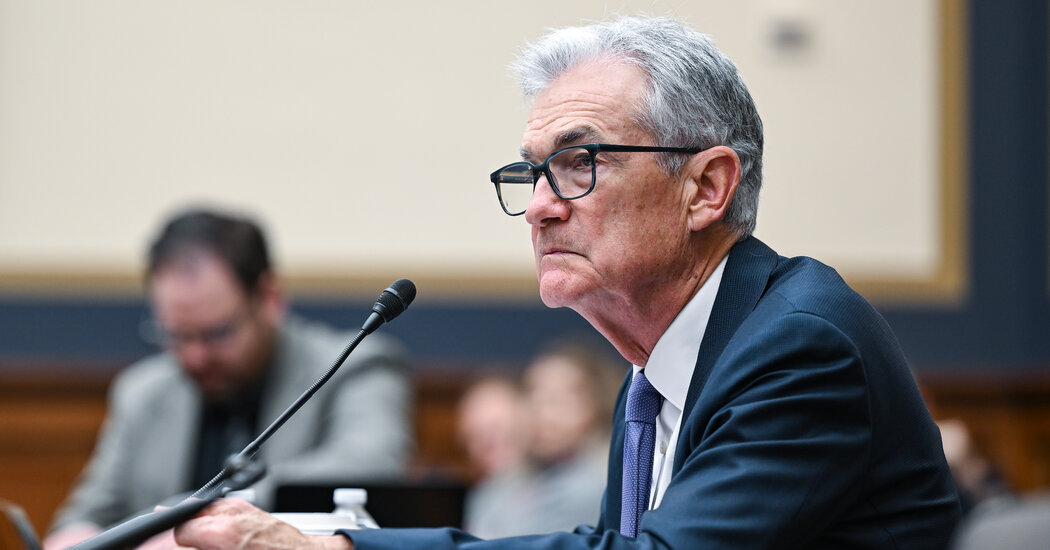
The U.S. government’s ongoing budget deficit and increasing debt were not major concerns on Wall Street when interest rates were at historically low levels. However, rising borrowing costs have raised alarm among investors and economists about the sustainability of the United States’ large debt burden.
To combat inflation, Federal Reserve officials have raised interest rates to about 5.1 percent since early 2022. They have also indicated that rates could remain high for years to come, contradicting expectations of a significant rate drop in the near future.
The combination of the Fed’s potential long-term high rates and other factors has led to a surge in long-term interest rates in financial markets. The 10-year Treasury bond rate, which influences borrowing costs for mortgages and corporate debt, has reached nearly a two-decade high.
The exact cause of this increase in Treasury rates is difficult to pinpoint, but it is likely driven by a combination of strong economic growth, reduced foreign demand for U.S. debt, and concerns about debt sustainability.
If interest rates remain elevated, the U.S. government will have to pay higher interest rates on its borrowing. The country’s gross national debt currently exceeds $33 trillion, surpassing the annual output of the American economy. The debt is projected to continue growing both in absolute numbers and as a percentage of the economy.
While the rising cost of holding such a large debt burden sparks discussions among economists and investors about the appropriate size of the government’s annual borrowing, there is no consensus in Washington for deficit reduction through either higher taxes or significant spending cuts.
The growing concern marks a significant shift from previous years when many mainstream economists believed that the U.S. could afford higher debt levels due to low interest rates. These low rates led to the belief that the government could borrow cheaply to fund economic relief and future investments.
According to Jason Furman, an economist at Harvard and former official under the Obama administration, the impact of deficits depends largely on interest rates. With the recent surge in rates, the view on deficits should also change.
Previously, Furman estimated that the rising cost of interest on federal debt would remain sustainable by factoring in inflation and economic growth. However, with the significant increase in rates, this calculation has shifted.
Since 2000, the United States has consistently had an annual budget deficit, relying on borrowing to cover the gap between spending and revenue. Tax cuts, spending increases, and economic assistance have contributed to rising deficits in recent years. The aging population has also increased costs for social security and medical programs without corresponding increases in federal tax rates. Despite economic growth, the deficit as a percentage of the economy has continued to rise under both President Biden and former President Trump.
Higher interest rates and weak tax collections have led to a doubling of the federal budget deficit over the past year. The deficit is expected to reach an estimated $2 trillion for the 2023 fiscal year.
If borrowing costs continue to rise or remain high for an extended period, the government’s debt accumulation will exceed previous expectations. Recent projections indicated interest rates on 10-year Treasury bonds would not exceed 3.7 percent over the next decade, but they are currently around 4.7 percent.
The recent surge in longer-term bond yields can be attributed to several factors. While short-term interest rates have been increasing due to Fed actions, longer-term rates remained stable earlier this year. However, investors are now adjusting to the possibility of the Fed maintaining higher rates for an extended period. Additionally, the Fed’s reduction of its bond holdings and reduced foreign demand for U.S. debt have further influenced bond yields.
Analysts have suggested that the increase in bond yields may also reflect concerns about debt sustainability. The need to pay higher interest costs could lead to increased debt issuance, compounding the problem and drawing attention to America’s substantial debt load.
The current challenge lies in the fact that the U.S. continues to accumulate debt despite low unemployment and strong economic growth, indicating that the economy does not require significant government assistance.
Robert Tipp, chief investment strategist at PGIM Fixed Income, compared the current situation to a wartime budget deficit without central bank support. He noted the high issuance of debt alongside the Fed’s message of higher rates for a longer period.
White House officials have stated that it is too early to determine whether rising bond yields should prompt additional deficit-reduction proposals. The Treasury Department has already sold close to $16 trillion of debt for the year, with net debt issuance exceeding any other period in the last decade except for the pandemic-induced surge in 2020.
Maya MacGuineas, president of the bipartisan Committee for a Responsible Federal Budget, emphasized that excessive borrowing makes the U.S. increasingly vulnerable to higher interest rates.
Santul Nerkar contributed reporting.
RELATED POSTS
View all


